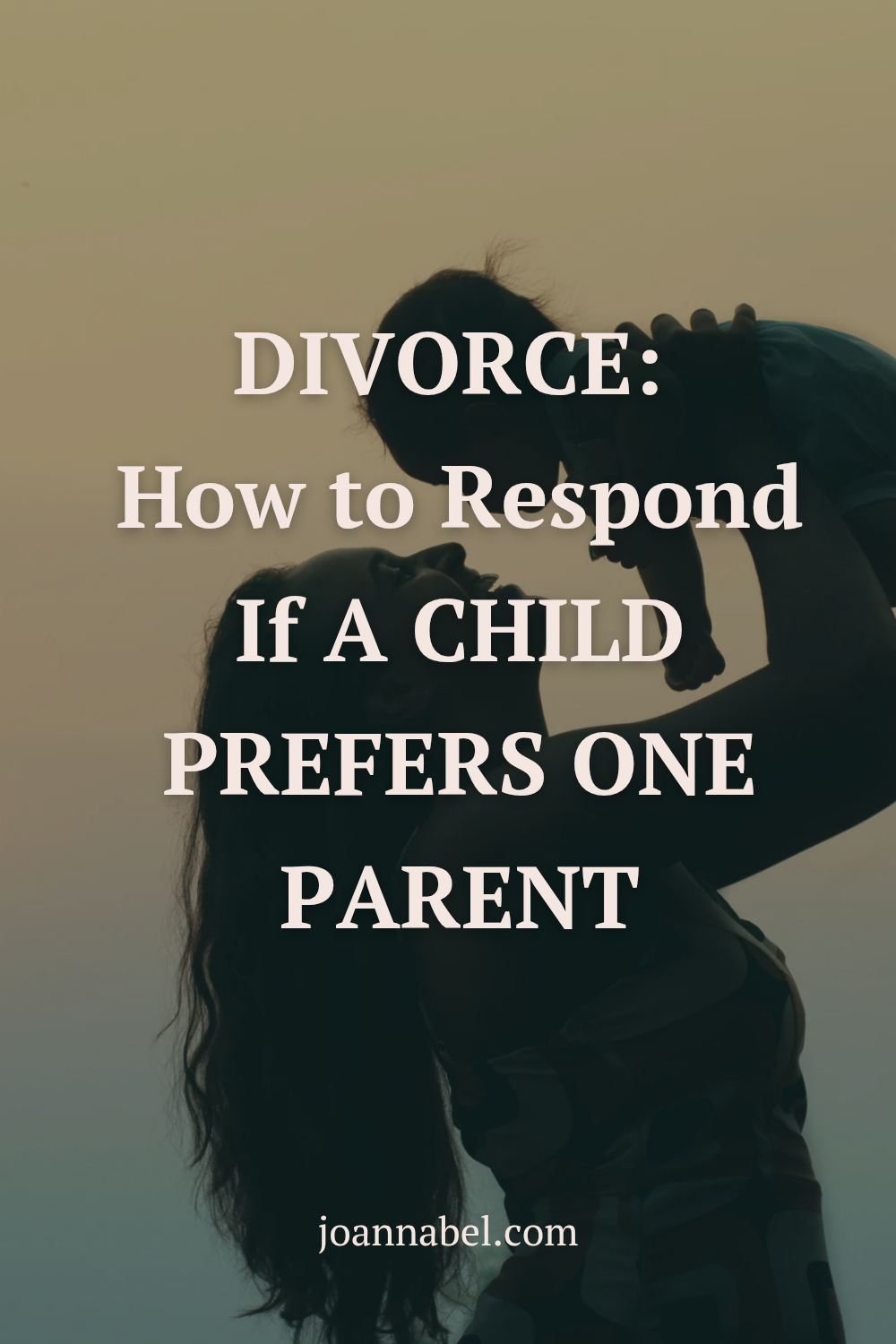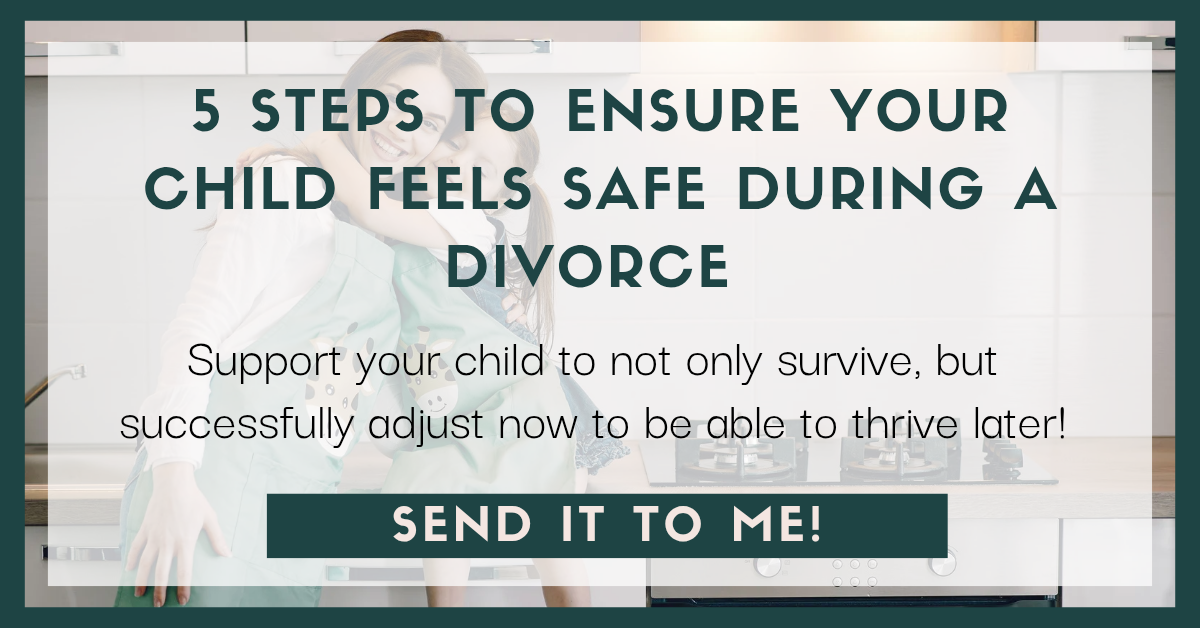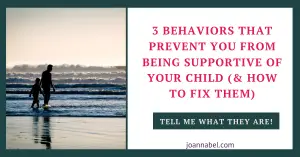Navigating divorce isn’t simple when a child shows a clear preference for one parent because it can stir up a mix of emotions—hurt, confusion, even self-doubt. Yet, a child’s choice is often a expression influenced by many factors.

Divorce: A Child Prefers One Parent
In this post, we’ll explore the sources of this influences and how to respond when your child prefers one parent during or after a divorce, working through these feelings using empathy, open communication, and a commitment to the child’s well-being.
Let’s dive in!
Hi, I’m Jovana, a Clinical Social Worker. Everything I share is based on years of formal education, research, and practical experience working with a justice system supporting parents and children go through the divorce process feeling safe and secure – even when family dynamics change – making confident decisions pre, during, and post divorce.
#1 A CHILD LEANS TOWARD ONE PARENT DUE TO THEIR AUTHENTIC CHOICE WITH WHAT YOU NEED TO MAKE PEACE

Children’s preferences can be influenced by their developmental stage, emotional state, experiences, and the current dynamics of the relationship. Recognizing that these preferences are authentic reflections of what your child needs at the moment—and not an attack on your parenting—can help you respond with empathy, patience, and understanding.
It’s important to realize that your child’s preference—however painful it might feel—is a real expression of their current views and feelings. Children are perceptive and, at times, make choices based on what feels most comfortable or safe to them.
While it might sting, understanding that this choice comes from an authentic place can be the first step in making peace with the situation. Rather than viewing it as a personal rejection, consider it an opportunity to reflect on your relationship with them and explore ways to connect on a deeper level.
Accepting that their choice is not an accusation against you allows for greater emotional clarity and helps in finding peaceful ways to move forward.
Authenticity in your child’s expression is not necessarily a reflection of your overall parenting capacity and skills. Instead, it’s a snapshot of a complex family dynamic during a transitional period.
It can be the result of the current emotional needs or circumstances your child is facing.
If you want to continue down the road of uncovering what your child needs from you during this delicate tome and secure their well-being, use my FREE 3-day mini crash course 5 Steps To Ensure Your Child Feels Safe And Protected During A DIVORCE. This will enable them to not only survive, but adjust successfully now to be able to thrive later. Click below to sign up:
5 STEPS To Ensure Your Child Feels Safe During A DIVORCE (adjusting now to thrive later)
#2 CHILD’S AGE OR OTHER CIRCUMSTANTIAL FACTORS IMPACTED THE CHILD-PARENT BOND AND THE LEVEL OF CLOSENESS AND DEPENDENCE
The child’s developmental stage significantly influences which parent they cling to, with younger children gravitating toward the parent who provides consistent care. As children grow, changes in their independence, lifestyle, and emotional climate, along with their relationship dynamics, can shift preferences.
Parenting factors like post-divorce child-parent contacs, living arrangements, and emotional stability matter too. It’s not about one parent being better.
Connection is fluid over time, so understanding these influences helps parents adjust to make the child feel secure and loved. A child’s attunement to each parent is deeply influenced by their developmental stage and the everyday circumstances surrounding their life.
For younger children, the comfort of consistent routines and regular contact creates a strong, secure bond with the parent who provides that stability. They often gravitate toward the caregiver who is present most frequently and who offers predictable daily experiences.
On the other hand, as children grow older, their needs shift. Older children might incline to a parent who aligns with their evolving sense of independence. In this stage, the quality of contact become crucial—it’s not just about being around, but about sharing meaningful interactions that validate their emerging identity and needs.
It’s important to recognize that these shifting inclinations are not an indication that one parent is inherently “better” than the other. Instead, they reflect the specific circumstances that shape a child’s life experiences.
Understanding these nuances can help both you and the co-parent adjust your approached, ensuring the child feels secure, heard, and loved, even if their preference seems to lean toward one parent at a particular time.
Ultimately, these bonds change as a child’s circumstances and developmental change. By taking a thoughtful look at factors like consistency, emotional support, and daily routines, you can better support their child’s well-being during the ever-evolving process of growth.
To continue down the path of securing their well-being, use my FREE 3-day mini crash course 5 Steps To Ensure Your Child Feels Safe And Protected During A DIVORCE. This will enable them to not only survive, but adjust successfully now to be able to thrive later. Sign up below:
#3 CHILD FAVORS ONE PARENT DUE TO THAT PARENT’S PERMISSIVENESS (DON’T CONFUSE PERMISSIVENESS WITH EMOTIONAL WARMTH AND RESPONSIVENESS)
Sometimes, a child’s preference for the other parent may be rooted in that parent’s more permissive approach—offering fewer limitations and a more relaxed, ‘fun’ environment. At first glance, this leniency can feel very appealing: the freedom to stay up late, indulge in treats, or escape the usual rules can create a sense of immediate gratification and excitement for the child.
However, it’s important to recognize that while a permissive parenting style might offer short-term appeal, it often lacks the consistent structure that is essential for long-term emotional security.
Permissiveness does not automatically equate to genuine emotional warmth or responsiveness. The immediate fun of fewer restrictions can mask an absence of stability and guidance, elements that are crucial for a child’s healthy development over time.
If you notice that your child is attracted to the more permissive environment, consider that your own approach—centered on consistency, clearer rules boundaries, and steady emotional support—is valuable and purposeful. Your method isn’t a shortfall but a deliberate choice that provides the structure and reliability necessary for long-term well-being.
Instead of trying to mimic permissiveness, focus on reinforcing the deep emotional connection you naturally offer. Balancing firm guidelines with kindness ensures your child feels both cherished and secure, even if the immediate allure of freedom elsewhere appears more attractive.
Additionally, it’s worthwhile to assess whether your child’s preference is merely a reaction to temporary stress or a reflection of an unmet need because you could perhaps loosen the structure.
By maintaining open lines of communication, you can find out what it is. If you’re not too strict then good communication will ensure your child understands that while a more lenient environment might feel comfortable in the moment, the consistency and care you provide form the foundation for their emotional stability and growth.
In essence, while a permissive style might draw a child’s attention in the short term, the long-term benefits of a stable, structured, and emotionally warm environment are far more significant.
#4 CHILD ‘HAS PREFERANCE’ FOR ONE PARENT DURING/POST DIVORCE AS A RESULT OF PARENTAL/CHILD INSTRUMENTALIZON AND/OR ALIENATION
In some cases, a child’s expressed preference for one parent may not solely stem from their own desires but can be the result of external influences, often referred to as parental alienation or a child instrumentalization.
Whether intentionally or inadvertently, one parent may turn the child against the other, causing their feelings to be skewed and creating conflict where there should be understanding.
When a child’s preference seems influenced by these external factors, it is essential to recognize that their choice may not fully reflect their authentic feelings. In these situations, what appears to be a natural preference is often a byproduct of (subtle) coercion or manipulation.
For example, if one parent paints the other parent in a negative light consistently, the child may internalize these perceptions, unaware that their feelings are shaped by external pressures rather than their genuine emotional needs. Many kids do know the truth about the parent who is attacked (allianated) by the other one, but since they are trying to survive they may be forced to do as the attacking parents asks.
With this in mind, refrain from pressuring the child since you’ll create even more danger for them that way. Your addresses are the legal and administrative proceedings that are designed to protect your and your child’s rights and freedoms.
So if you suspect parental alienation or that your child’s preference may be influenced by these outside influences, besides seeking legal remedies, it’s important to stay calm and keep the lines of communication with the child open.
Encourage honest, age-appropriate conversations where your child feels safe to express their true feelings without fear of judgment, conflict, or pressure to choose. By fostering a space where your child can speak freely, you ensure that their voice remains authentic, and they aren’t simply parroting messages they’ve been exposed to.
It’s equally crucial to avoid using your child as a messenger or a pawn in parental disputes, regardless if the other parent is doing so unfortunately. Often, in the heat of conflict, parents may unintentionally place children in the middle of disagreements or rely on them to relay messages.
Instead of using your child as a mediator, prioritize establishing a collaborative and respectful co-parenting dynamic with your ex-partner. The goal is to protect your child from unnecessary emotional distress and ensure that their well-being remains the central focus, above all.
Seeking the support of a neutral third party—such as a counselor or mediator—can help re-establish healthier communication channels. In essence, recognizing and addressing the dynamics of parental alienation is key.
By aligning around what’s best for the child and ensuring their feelings are genuinely heard—and not just reflections of outside pressures—you safeguard their emotional health while rebuilding strong, supportive connections on both sides.
IF YOU NEED SUPPORT WITH:
- (pre)divorce and post divorce-related concerns and exercise of parental rights – be sure nothing you care about is left to chance and unaddressed, and get critical insights on the best practices for you which are suitable for your particular situation,
- effective and assertive communication around exercise of parental rights during or after a divorce that supports the child’s best interest – go through this process as easy as possible and with the least amount of challenge, setbacks, or throw offs,
- making sure you create as healthy and as supportive environment for your child as you (reasonably) can now that the family structure has changed.
USE A DISCOUNT CODE FOR A 25% OFF (active until August 31, 2025): Consultations25
If you’re not sure yet, here are some alternatives for your convenience:
Use a code available because your a reader of Joanna Bel blog: Divorce25 for a 10% off.
Not sure? I got you! Take my FREE 3-day mini crash course 5 Steps To Ensure Your Child Feels Safe And Protected During A DIVORCE. This will enable them to not only survive, but adjust successfully now to be able to thrive later. Click below to sign up:
5 STEPS To Ensure Your Child Feels Safe During A DIVORCE (adjusting now to thrive later)
Latest Posts:
- Special Gifts to Let Someone Know You’re Thinking of Them (13)

- 100 Ways to Challenge Yourself (Without Stretching Yourself Too Thin)

- What To Do When Your Parent Struggles With Alcohol

- How To Navigate Moving to a New Home With Your Kids

- Prenups for Young Couples (A Modern Approach)

- What Happens When You Sign A Prenup (Relationship-Wise + Legally)

FINAL THOUGHTS ON WHAT TO DO IF A CHILD SEEMS TO FAVOR ONE PARENT DURING/AFTER DIVORCE
Navigating your child’s inclining towards one other parent during or post-divorce isn’t about comparison and competition but about understanding their views and needs. Divorce can be challenging, but creating an environment where both parents contribute to the emotional well-being of the child—free from manipulation or guilt—lays the groundwork for a balanced family dynamics.
Even though you don’t have control how the co-parent handles the situation, you do have it over your own behavior and actions.
The path ahead involves patience, empathy, and a commitment to keeping the relationship strong for the benefit of your child.
If you found this helpful, keep reading:

Note: Although I am a Clinical Social Worker, engaging with this website does not establish a professional social worker-client relationship. The information provided here is for general purposes only and should not be considered professional advice. While we strive to ensure accuracy and reliability, this content is not a substitute for professional guidance. For specific concerns, issues, or situations, it is essential to consult a qualified professional and present your situation. Read the full Disclaimer here.










Leave a Reply